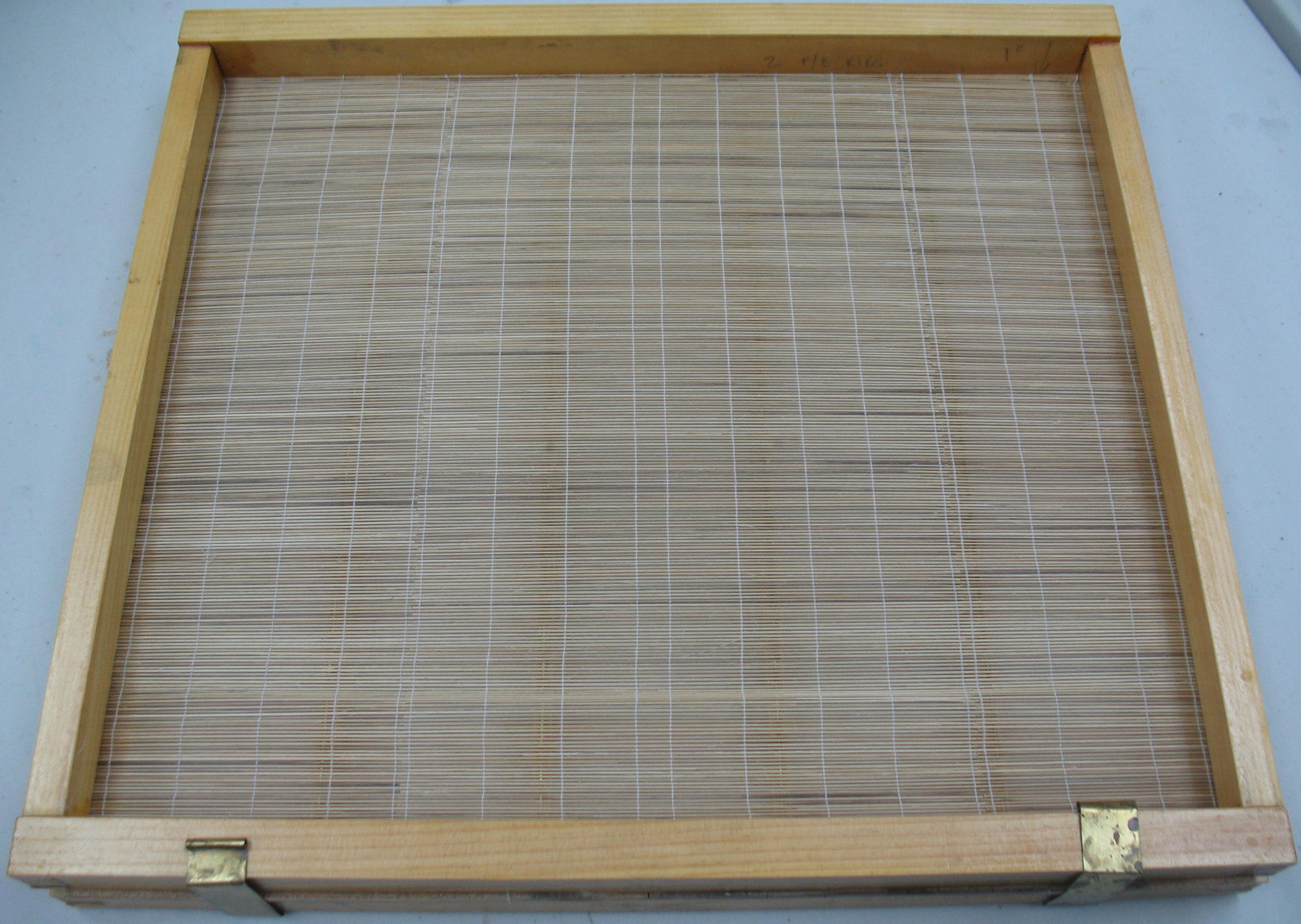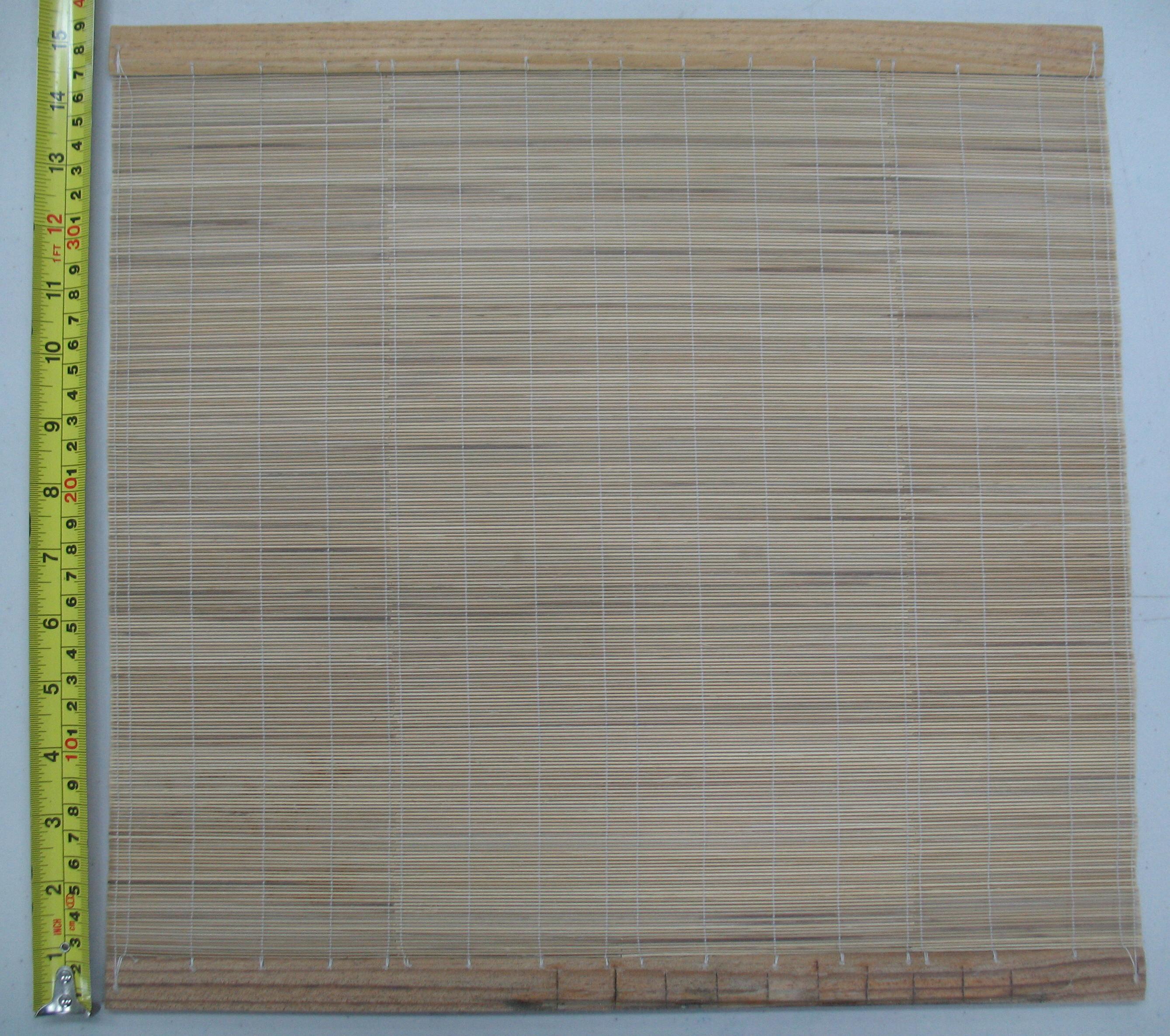After some thought, I would say “probably not.”
I have a su (bamboo screen for Japanese-style paper making) for which I made a keta (combined support frame and deckle) many years ago.

The keta, or deckle frame, shown here open, which supports the su and contains the liquid pulp during sheet formation

The keta closed with the su in place. The combination is called a sugeta (a combination of su and keta with the unvoiced k replaced with a voiced hard g)
I’ve taken the occasional attempt at making paper using this, with very marginal success. One problem I have is getting the sheet to couch off cleanly.
Even if there is full contact (i.e. no bubbles) between the post and the new sheet, the su seems to pick and tear the new sheet when lifted off. When I was trying to make paper when I was in PEI, I added a layer of no-see-um netting over the su, and only then managed to get sheets to couch off cleanly.
One thought occurred to me recently: My keta is a tiny bit too large, and the su has to stretch a bit for the keta to close. When dry, the su is a bit slack on the keta, but once wet, the bamboo splints swell and the silk threads shrink making the su a bit smaller than the keta. The edge sticks of the su are held by the closed keta, and the su must be stretched about 5mm for the keta to close.
At the time a tiny bit of stretch seemed like a good thing, to keep the su flat. But now I’m wondering if this might relate to my couching problems. The su is about 350mm wide, so 5mm represents about a 1.4% stretch. However, all the stretching occurs in the gaps between the splints, which represent about 20-30% of the total width. This means that the gaps expand by 4.5-7% when the su is placed in the keta.
When I form the sheet, at least some fibre goes into the gaps between the splints. When I remove the su from the keta and try couching it, the gaps close again by this same 4.5-7%, gripping at least some of the fibres so they cannot release from the su properly.
I have no good way of testing this theory other than to make a new keta. In the process I would also make it a bit narrower to better cover the sides of the su as another couching problem I have is fibre snagging on the ends of the splints. Finally, I would camber the top frame a tiny bit so it presses firmly on the edges of the su to produce a tight fibre-proof seal.


Kevin
Love your post on suketa -Japanese paper making. Thanks for sharing this.
Peace & God’s blessings,
S
If you have not gotten answers on this I would suggest that you take Amy Richards online class on Japanese paper making. She lives in Gainville FA. I just finished it and it is excellent. My best guess is you need more Nero or PEO. Also there are mixing techniques for Nero making and mixing it with the pulp. Secondly, you may need to add a su fabric (fine Muslim works) to the su. You stitch it to the top of the su.